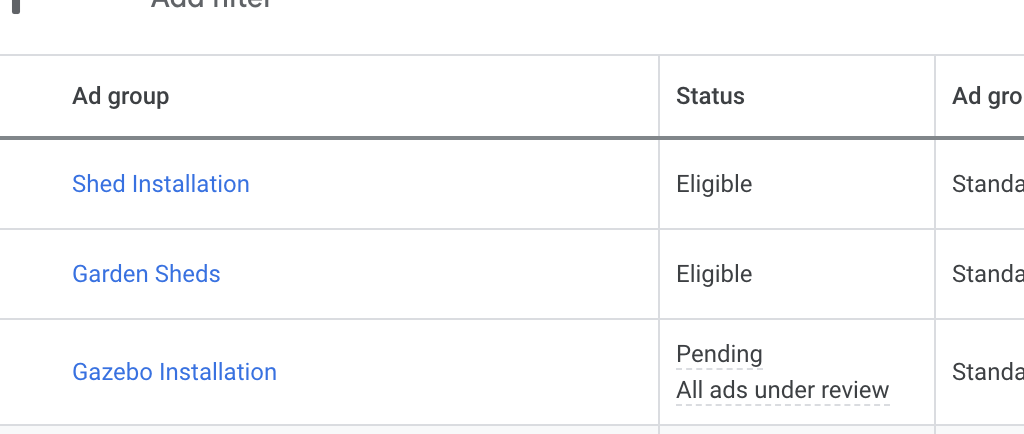Ad groups in Google AdWords (now called Google Ads) are a way to organize your ads by theme or topic. An ad group consists of a set of ads that target a specific set of keywords or placements, and each ad group can have its own bid, targeting, and budget settings.

Here’s an example: Let’s say you run an online shoe store and want to create a Google Ads campaign to promote your running shoes. You might create an ad group specifically for your running shoes, with ads featuring images of your running shoes and messaging emphasizing their benefits for runners. Within that ad group, you might include keywords such as “running shoes,” “athletic shoes,” and “jogging shoes,” which would trigger your ads to appear when someone searches for those terms on Google.
By organizing your ads into ad groups, you can more effectively target your advertising to specific audiences and track the performance of your campaigns. You can also test different ad copy, keywords, and targeting strategies within each ad group to optimize your results over time.
You should have different ad groups when you want to organize your advertising campaigns based on specific themes or product categories. Ad groups are collections of ads that share a common theme or set of keywords, and having multiple ad groups can help you target your ads more effectively and improve their performance.
Here are some situations where you might want to create different ad groups:
1. If you offer a range of products or services, you may want to create separate ad groups for each category. For example, if you sell shoes, you could have ad groups for running shoes, dress shoes, and casual shoes.
2. If you are targeting different geographic locations, you may want to create separate ad groups for each location. This can help you tailor your ads to the local market and improve your ad relevance.
3. If you are targeting different audiences, you may want to create separate ad groups for each audience segment. For example, if you sell products for both men and women, you could have ad groups for each gender.
4. If you want to test different ad copy or keywords, you may want to create separate ad groups for each variation. This can help you compare the performance of different ads and optimize your campaigns for better results.
You can increase landing page score by organising keywords and ads in different ad groups
Organizing your keywords and ads into different ad groups can help increase your landing page score in Google Ads. A landing page score is a measure of how relevant your landing page is to the keywords and ads in your campaign, and it’s an important factor in determining your ad’s placement and cost per click.
Here are a few ways that organizing your campaigns into ad groups can help increase your landing page score:
5. Improved keyword targeting: By creating ad groups based on specific themes or topics, you can group together related keywords that are more likely to trigger your ads. This can increase the relevance of your landing page to those keywords, which can improve your landing page score.
6. Better ad copy alignment: When you organize your ads into different ad groups, you can tailor your ad copy to be more specific to the keywords in each group. This can improve the relevance of your ads to your landing page, which can also improve your landing page score.
7. Increased landing page relevance: By organizing your campaigns into ad groups, you can ensure that your landing page is highly relevant to the specific themes or topics you are targeting. This can help improve your landing page score and can also improve the user experience for your visitors, which can increase your conversion rates.
Overall, organizing your campaigns into ad groups can help you improve your landing page score and increase the effectiveness of your Google Ads campaigns.

